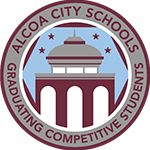🎧 Listen to the Audio Deep Dive
Why Adapt? The Unignorable Benefits of Tech in the Classroom
You might be thinking, "Another tech initiative?" But the benefits of thoughtfully integrated technology go far beyond simply keeping up. Here's why adapting your teaching methods with technology is a game-changer for your students.
For starters, technology can dramatically increase engagement and motivation. Let's face it, screens are captivating. When used purposefully, digital tools, interactive software, and even gamified learning platforms can transform traditionally dry subjects into dynamic, exciting activities. Think beyond the lecture – imagine students actively participating in quizzes, exploring virtual field trips, or creating digital projects to showcase their understanding.
Technology also enables truly personalized learning experiences. Every student is unique, with different learning styles and paces. Adaptive learning platforms can tailor content difficulty based on individual performance, while AI-powered tutoring systems can provide targeted support. This means every student can learn at their own pace, getting exactly the support they need to master concepts.
Furthermore, technology enhances collaboration and communication. Gone are the days of solely individual work. Collaborative online tools like Google Docs, Slides, and Sheets enable students and teachers to work together in real-time, share ideas, and give peer feedback, fostering essential teamwork and communication skills. These tools also bridge the gap between school and home, allowing for better communication with parents and remote collaboration.
The internet offers access to a world of resources. Beyond textbooks, technology provides an endless array of e-books, videos, online courses, and interactive simulations. This wealth of resources allows you to enrich your lessons and cater to diverse learning preferences, giving students a more comprehensive and engaging educational journey.
Crucially, integrating technology prepares students for the future workforce. Digital literacy isn't a bonus skill anymore; it's a fundamental requirement. By using technology in your lessons, you're not just teaching content, you're equipping students with the critical skills they'll need for higher education and the modern workplace – from coding and data analysis to digital communication and problem-solving.
Finally, technology promotes accessibility. Adaptive readers, text-to-speech software, closed captioning, and other assistive technologies ensure that all students, including those with diverse and special needs, can fully participate and access educational content. Technology can truly be a powerful equalizer.
Navigating the Digital Landscape: Practical Strategies for Adaptation
So, how do we begin to adapt? It doesn't have to be a complete overhaul. Here are some practical strategies to integrate technology effectively.
Start small and be intentional. Don't feel pressured to adopt every new tool out there. Begin with one or two digital tools that directly align with your learning objectives. Ask yourself: "How will this technology enhance student learning or make a task more efficient?" For instance, if your goal is to boost collaboration, explore tools designed for group work.
Consider embracing blended learning, which combines traditional face-to-face instruction with online components. This could involve "flipping" your classroom where students engage with instructional content at home (e.g., watching video lectures) and use class time for deeper discussions and application.
Leverage Learning Management Systems (LMS) like Google Classroom. These platforms can become your central hub for assignments, resources, and communication. They streamline grading, provide a clear organizational structure, and keep everyone informed.
You can also explore gamified learning to turn lessons into a fun challenge! Tools like Kahoot!, Quizlet, and Quizzizz offer engaging ways to review material, assess understanding, and encourage friendly competition.
Empower your students to be creators, not just consumers, by facilitating digital creation. Encourage them to use tools to design presentations, create videos, develop podcasts, or build interactive stories to demonstrate their learning.
As technology becomes more prevalent, it's crucial to teach digital citizenship. Educate students on responsible online behavior, digital privacy, and the ethical implications of technology. Make these conversations a regular part of your classroom.
Remember, technology is constantly evolving, so don't be afraid to learn alongside your students. It's okay not to have all the answers. Show your students that learning is a continuous process, and involve them in discovering new apps or features. This fosters a growth mindset and builds their confidence.
Finally, prioritize professional development. Successful technology integration hinges on ongoing learning. Seek out workshops, online courses, or even informal learning opportunities with colleagues to enhance your digital literacy and explore new pedagogical approaches. Many resources exist to support teachers in this journey.
The Human Element Remains Key
While technology offers incredible possibilities, remember that it's a tool, not a replacement for the invaluable human connection you provide. The most effective classrooms will always blend innovative tech with strong pedagogical practices and a nurturing environment.
By thoughtfully adapting your teaching methods to incorporate technology, you're not just preparing your students for tests – you're preparing them for a future where adaptability, digital literacy, and critical thinking are paramount. It's an exciting journey, and your willingness to embrace it will undoubtedly empower your students to thrive.
What specific technological tools or strategies have you found most effective in your classroom, and what challenges have you overcome in implementing them?
